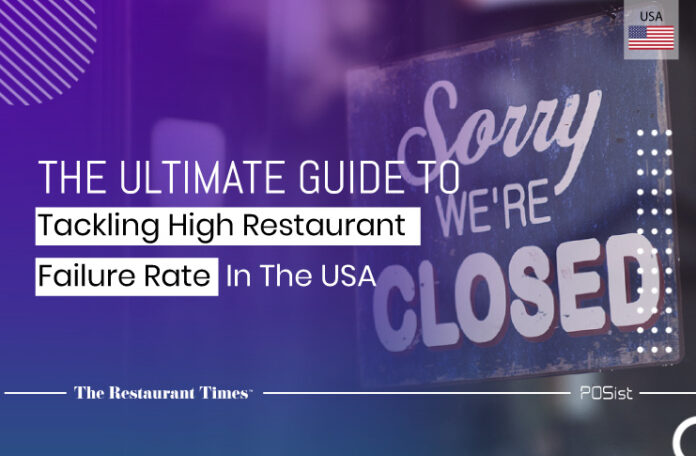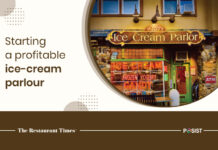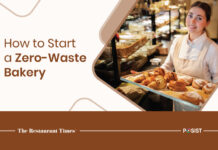The restaurant failure rates are very high in the United States, so much so that only 40% of restaurants make it past the first year of inception. And only 20% celebrate their fifth anniversary. While many dream of opening and managing a restaurant, it soon becomes a nightmare. And rightly so, for it takes tons of patience, perseverance, and hard work to be a capable restaurateur. Most restaurants fail because of poor inventory management, inability to retain customers, lack of a solid social media presence, among many other factors. Knowing the predicament is the first step, but how do you address the issues? Read on to understand the solutions to tackle high restaurant failure rates and ways to run a successful business.
6 Ways To Tackle High Restaurant Failure Rates
There are several ways you can avoid setting your restaurant up for failure. Let’s look at the six most important ones.
1. Avoid Ignoring Exorbitantly High Food Costs
Food costs make up one-third of the total cost incurred by restaurants. And this is also one of the biggest reasons for restaurant failure. High food costs can get out of hand quickly if not accounted for.
So take your time choosing food products and buying them at more reasonable prices. Do your market research, count the inventory, find the COGS (Cost of Goods Sold) numbers, and consider the indirect costs. Considering these numbers while making the purchase decision can help you manage the money you spend. You automate this process if you have employed a cloud-based point of sale (POS) software. Besides, it can also help you manage inventory costs, thus reining in the food cost.
2. Stop Mindlessly Buying New Equipment And Furniture
It would help if you were mindful of all your purchases for the restaurant. Spend each penny wisely and make sure it is beneficial for the business. In the restaurant industry, being frugal can be life-saving. Besides, if you run out of capital before making profits, it will hardly be possible to find a way to emerge from financial problems. It is imperative to have enough funds in reserve for the first 12 to 16 months in case of any uncertainties. This is important since it is difficult to accurately predict the course of your financial operations during the first year.
3. Pay Attention To Location And Rentals
Many first-time owners tend to choose a location too expensive for their budgets. Or the location may be situated too far away from the ideal target audience. In any case, such poor choices tend to translate into higher losses. Ultimately, if the restaurant can’t cope, it may even have to be shut down. Therefore, having a good business plan and avoiding unrealistically high rents and poor location choices are indispensable for running a successful restaurant.
Doing sufficient market research before finalizing a location always helps. Location can also influence and determine the menu. Competition analysis, visibility and traffic in the surroundings, accessibility, parking spaces are all crucial elements for selecting the perfect location for your restaurant.

4. Be Consistent With Food And Service Quality
Customers usually tend to keep coming back if they can rely on consistently good service and food. This can also help with good marketing since happy customers bring in more customers via word-of-mouth. If the quality is not consistent, customers hardly ever retain as there is strong competition. Everyone likes familiarity and customers like knowing what they can expect to get for their money in terms of food and service. Knowing how to deliver stellar customer service is one of the do-or-dies in the restaurant industry.
Plus, reputation matters a lot. Customers trust the reviews of others who have already tried the food and services of your restaurant. Hence, keeping the customers satisfied is important. Every employee must invest and be committed to the restaurant’s success. Even if someone leaves a negative review, learning to respond correctly can win more business.
5. Utilize Effective Marketing Strategies
The power of the right marketing strategies is often considered a make-or-break point for any business, including restaurants. Due to extreme competition and falling customer loyalty, it gets difficult to make a mark. Thus, marketing has become a must for a thriving business. Restaurateurs who do not believe in marketing make a massive blunder and set their restaurants up for failure.
Today, the digital revolution and information overload have become gruelling to capture the attention span of the customers. Outsourcing this role by creating a budget for advertising and investing in a good marketing plan can work wonders. It would help if you built the marketing strategies around the strengths of your restaurant. Engaging campaigns can be run by analyzing the consumption patterns of the customers.
6. Adapt With Time
A lot of restaurant owners have trouble attracting new customers, it’s usually because they cannot evolve with evolving customer needs. Businesses that do not adapt as times change are destined to doom. Incorporating innovation and creativity while sticking to your original mission and values is the key.
Embracing technology and getting online is the first step to not being left behind. There are some basics, like your menu made online, website modern, and social media accounts updated. Social media is a great way to spread the word. Updating your menu according to the changing food preferences of the customers is also a plus. For example, you can label your menu items as vegetarian, vegan, gluten-free, lactose-free, etc. In addition, you can reach more customers by partnering with delivery companies.
Most restaurateurs do not realize what and where something is going wrong. Hence, they cannot save their dying business. Avoid these serious mistakes, and don’t wait until it’s too late to revive your restaurant. Fortunately, learning from the mistakes of other restaurateurs and applying the right techniques can increase your restaurant’s lifespan and profits.

















